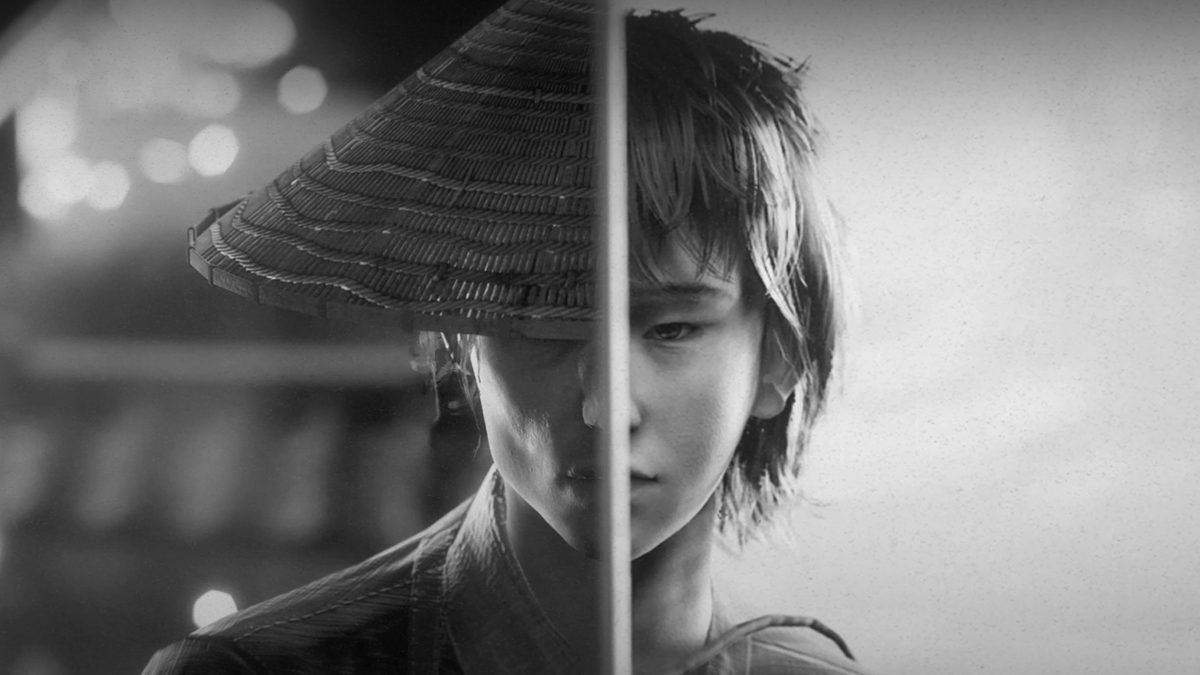Like Kurosawa I make mad films, ‘kay I don’t make films
Yomi is a concept that is so depressing, that it’s largely not followed in contemporary Japanese society, even among those that still observe the rituals of Shinto. It doesn’t matter what you do in your life, the mythology says you were sent to the land of darkness to rot for eternity. It’s no wonder the Japanese were quick to merge their indigenous religion with Buddhism.
Nonetheless, it’s central to the romanticized image of the Samurai, which I never really got. Sure, you sent your foes to Yomi, but you’re going to wind up there yourself. It doesn’t matter what a great swordsman you are, everyone is equal in the way they’re going to rot.
But, like Hades, it works from a mythological standpoint. Are you a bad enough dude to head to Yomi and back? Doomguy has a vacation home in Hell, which shows the theme still works, and that’s exactly what Trek to Yomi is about. Visiting the afterlife, I mean. Not Doomguy’s vacation home.

Trek to Yomi (PC [Reviewed], PS4, PS5, Xbox One, Xbox Series X/S)
Developer: Leonard Menchiari, Flying Wild Hog
Publisher: Devolver Digital
Released: May 5, 2022
MSRP: $19.99
It’s probably fairer to say that Trek to Yomi is about old post-war Samurai flicks. The whole game is presented in black and white with heavy film grain effects. Rather than just being a filter, however, Trek to Yomi takes great care in its use of shadow, contrast, and framing. You could play Ghost of Tsushima with a black-and-white filter slapped over top, but that just doesn’t have the same effect as a game that was built with it being central to its aesthetic.
It tells the story of Hiroki, a samurai whose sensei is, rather predictably, killed. Years later, history repeats itself and Hiroki’s village is again attacked by bandits, but this time he’s going to have to go further than just learning to murder to reach his destiny.
Honestly, it’s not the best story. It works well as a framework for the aesthetic, but it’s awkwardly paced and thematically muddled. It has its interesting points, but you can tangibly feel it pushing you through visually interesting setpieces.
Trek to Yomi shuffles between fixed camera “exploration” sections and side-scrolling combat. It utilizes its dominance of the camera to give you the best views of its beautiful and haunting backgrounds.
The exploration feels a little forced. Trek to Yomi is a restrictively linear game, but there are opportunities to probe the margins for collectibles, upgrades, and traps that can be triggered against groups of enemies. It has a habit of saying, “hurry, everyone is in danger,” while also pushing you to check every doorway for knickknacks. It can also be difficult to discern what direction is a secret and which way you’re supposed to go. Often, I wouldn’t find traps until I had already killed the enemies standing beneath them. It’s hard to pick the correct doorway when you aren’t clairvoyant.
It’s something to spice up the gameplay, I suppose, which it badly needs. Combat isn’t very interesting. It follows the Assassin’s Creed/Batman/Ghost of Tsushima style in putting focus on parrying, dodging, and staggering. Where it fails in its tactility. Enemies don’t react very satisfyingly to being hit. Even when you manage to stun them, they just stop what they’re doing and slacken their shoulders, waiting for you to either deliver the death blow or screw up and press the wrong button.

It’s not helped that all combat is on a 2D plane. While I think it could work, it largely means that enemies either attack you one at a time, from a range, or from both sides. I get that the Samurai code of honor put emphasis on one-on-one combat, but it doesn’t lead to much excitement.
There’s also a combo system that takes some getting used to, but when I did, I found a combo that worked and largely used it for most of the game. Pressing back doesn’t make your character turn, which is awkward; you need to press a face button or perform a turning combo. It’s not horrible, but it’s just unintuitive enough to result in a few stabs in the back.
So, it’s fine, but it’s really all there is to gameplay. A few (very simple) puzzles crop up, but the design is more focused on framing the awesome stuff going on in the background. The combat is the only challenge to it, and it’s not that interesting. I even won most boss battles by just being aggressive and hammering on that one combo that seemed to work for me. Hold up, press X, X, Y. The end.

This was on the default difficulty; the game’s medium mode. I suppose things would be different on its ultra-hard equivalent where you die in a single hit, but I generally reserve my over-achieving for games that really impact me and suck me in. Trek to Yomi didn’t do that.
The gameplay is just overwhelmingly underwhelming. Poor exploration, unimpressive combat, and a merely passable narrative can’t be made up for by aesthetics. Which is too bad, because the aesthetics are terrific. The backgrounds have a stunning amount of variety to them and are of almost poetic quality. I suppose if you saw Trek to Yomi and this is what grabbed you, then you’re all set. However, if you want strong gameplay to back that up, then it just isn’t worth the trek.
[This review is based on a retail build of the game provided by the publisher.]






Published: May 5, 2022 08:00 am